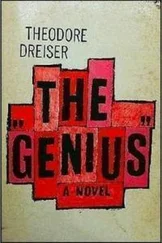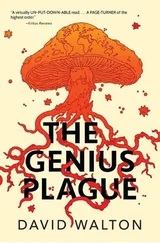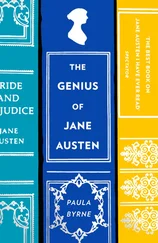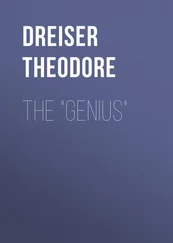Unknown - The Genius
Здесь есть возможность читать онлайн «Unknown - The Genius» весь текст электронной книги совершенно бесплатно (целиком полную версию без сокращений). В некоторых случаях можно слушать аудио, скачать через торрент в формате fb2 и присутствует краткое содержание. Жанр: Старинная литература, на английском языке. Описание произведения, (предисловие) а так же отзывы посетителей доступны на портале библиотеки ЛибКат.
- Название:The Genius
- Автор:
- Жанр:
- Год:неизвестен
- ISBN:нет данных
- Рейтинг книги:4 / 5. Голосов: 1
-
Избранное:Добавить в избранное
- Отзывы:
-
Ваша оценка:
- 80
- 1
- 2
- 3
- 4
- 5
The Genius: краткое содержание, описание и аннотация
Предлагаем к чтению аннотацию, описание, краткое содержание или предисловие (зависит от того, что написал сам автор книги «The Genius»). Если вы не нашли необходимую информацию о книге — напишите в комментариях, мы постараемся отыскать её.
The Genius — читать онлайн бесплатно полную книгу (весь текст) целиком
Ниже представлен текст книги, разбитый по страницам. Система сохранения места последней прочитанной страницы, позволяет с удобством читать онлайн бесплатно книгу «The Genius», без необходимости каждый раз заново искать на чём Вы остановились. Поставьте закладку, и сможете в любой момент перейти на страницу, на которой закончили чтение.
Интервал:
Закладка:
That he was a taxi driver.
“Okay, first of all, first of all, that is wrong. No way that guy could drive. He couldn’t even see. He was always bumping into the walls. That’s what used to drive us crazy, because he was always dropping things and bumping into the walls at two in the morning. You should ask the neighbor downstairs, I’m sure they can tell you about that.” So what was he, then?
“I don’t know, but he wasn’t driving no taxi. What kind of job does somebody like that have? Maybe he was a bus driver.” You said he couldn’t see.
“Have you ever been on a bus in this city? Maybe he was one of those guys that sold the pretzels.” He seems a little old for that.
“Yeah. You’re right. I didn’t think about that. How old was he?” What do you think?
“He was old. How old did Rosario say he was?” She didn’t say.
“Whatever she said, add ten years. Or twenty. Or subtract. Then you’ll have the real answer.”
GENEVIEVE MILES, downstairs neighbor: “It sounded like he was kicking sandbags up there.”
Her husband, Christopher: “Yeah, that’s about right.”
What does that sound like?
“What do you think it sounds like.”
Likethumping?
“Uh-huh. Like thumping.”
HOW DO YOU DISPLAY TWO ACRES OF ART? That was the question facing me as I began to claw through the Victor Cracke oeuvre. By our estimate, there were around 135,000 drawings, each on the same type of 8^-by-11 paper, low brightness, cheap and readily foundenough paper
to cover 87,688 square feet. We couldn’t very well hang the entire piece, unless the government of China decided to lease us the Great Wall.
I advanced a year’s rent on Victor’s apartment and brought in a photographer to document the placement of every item inside. I hired two temps, whose sole mission was to number the boxes, record their general contents, and haul them down to a truck. After the apartment was empty, I had it scrubbed and vacuumed to clear out the rest of that choking dust. Then the operation moved from Queens to Manhattan, where I set up a makeshift laboratory in a storage facility three blocks from my gallery. With the boxes piled high in one locker, I outfitted the adjacent locker with a desk, chairs, a high-powered surgical light, a plastic tarp that I spread on the floor, cotton gloves, a magnifying glass, a space heater, floodlamps, and a computer. Nightly, through the end of winter and all of spring, Ruby and I sat with two or three boxes, sorting their contents as rapidly as possible while still noting pieces of exceptional quality, racking our brains to figure out how in the world to put up a show.
In theory we could haveI don’t knowlaminated them all. I suppose we could have done that. We could, I suppose, have laid them all out in a field in western Pennsylvania or the Hudson River Valley and affixed them to the ground, invited people to walk around the perimeter, like some big conceptual piece by Smithson. That would have been one option.
But the logistics upset my stomach. Once sheathed in plastic, how well would the drawings align? Standing at the edge of the piece, would you be able to tell anything about its center, a hundred feet away? Was there even a center? What about glare, or wind, or warping? How could I possibly get people to make the drive?
At the same time, I had to acknowledge that shown individually, the drawings lost much of their power. Which is not to say that they weren’t still arrestingthey were. But splitting them up undermined what I believed to be one of the piece’s essential themes: connectedness, the unity of everything.
I drew this conclusion soon after bringing the first box out of storage and laying out fifty or sixty of the drawings. When had I pieced them together, I saw immediately the true nature of Victor Cracke’s monumental work: it was a map.
A map of reality as he perceived it. There were continents and boundary lines, nations and oceans and mountain ranges, all labeled in his meticulous handwriting. Phlenbendenum. Freddickville. Zythyrambiana, E. and W. The Green Qoptuag Forest, sending its fingers down into the Valley of Worthe, in which gleamed the golden cupola of the Cathedral Saint Gudrais and its Chamber of the Secret Sacred HeartKEEP OUT!, he warned. Names ripped from Tolkien, or Aldous Huxley. Adding more panels, zooming out, you encountered other planets, other suns and galaxies. Wormholes led to distant parts of the map, alluded to by their numbers. Like the universe itself, the edges of the piece seemed to be speeding away from its unfathomable center.
It was not just a map of space; it was a map of time as well. Places, figures, and scenes recurred in adjacent panels, moving in slow motion, like a comic book photocopied a thousand times, torn up, thrown into the air. Walking alongside the piece, reading its repetitions, one sensed the frustration at being unable to record everything, seen and imagined, in real timethe lines on the page always a few seconds out of date, and Victor sprinting to keep up.
DOES ANY OF THAT MAKE SENSE? I’m not sure that it does. Great art does that: it cuts out your tongue. And Victor’s art is especially hard to describe, not just because of its size and complexity but because it was so damned weird. Everything was out of whack; everything repeated ad nauseam, giving rise to two unsettling sensations. On the one hand, once you got used to his visual vocabularythe creatures, the wild proportionsyou began to feel a profound sense of deja vu, the strange becoming familiar, the way jargon starts to sound normal when everyone around you speaks it. On the other hand, the moment you stopped looking at the drawings, you were besieged by jamais vu, the familiar becoming strange, the way a regular word starts to sound wrong if you repeat it enough. I would look up from the drawing and notice Ruby playing with her tongue stud and the sound of it, the glint of ither whole faceher knees tucked under herher stark shadowed shape on the locker wallall of it would somehow seem wrong. That is to say: the drawing was so massive and encompassing and hypnotic that it had a hallucinogenic effect, distorting our perception of the real world to the extent that I sometimes felt like Ruby and I were figments of Victor’s imaginationthat the drawing was reality and we were characters inside it.
I fear that I’m not making sense again. Let me put it this way: we had to take a lot of breaks for fresh air.
SO THAT WAS THE PARADOX I FACED: how to exhibit an artistic Theory of Everything in fragments.
After a lot of thought and struggle, I settled on showing ten-by-ten segments, a decision that yielded “canvases” approximately seven feet by nine. The gallery could not accommodate more than fifteen or soor about one percent of the total work. I would suspend the canvases away from the wall, allowing viewers to walk all around them, to see the drawings’ luminous fronts as well as their systematic backs, which I came to interpret as a war between Victor’s right and left brain.
He had done his best to create a work of art that thwarted the notion of public exhibition; however, I am not easily put off, and I hate to fail once I’ve begun. In short, I didn’t give a damn about the creator’s intent.
I told you I behaved badly, didn’t I? I did. You were warned.
HE DID MORE THAN DRAW. He wrote as well. A few of the boxes contained thick, faux-leather-bound journals dating back to 1963. In them he had recorded the weather, his daily intake of food, and his church attendance, each category filling several volumes: thousands of entries, many of them identical. The food journal, in particular, was mind-numbing.
TUESDAY MAY 1 1973 breakfast scrambled eggs lunch apple ham & cheese
dinner apple ham & cheese
Читать дальшеИнтервал:
Закладка:
Похожие книги на «The Genius»
Представляем Вашему вниманию похожие книги на «The Genius» списком для выбора. Мы отобрали схожую по названию и смыслу литературу в надежде предоставить читателям больше вариантов отыскать новые, интересные, ещё непрочитанные произведения.
Обсуждение, отзывы о книге «The Genius» и просто собственные мнения читателей. Оставьте ваши комментарии, напишите, что Вы думаете о произведении, его смысле или главных героях. Укажите что конкретно понравилось, а что нет, и почему Вы так считаете.

